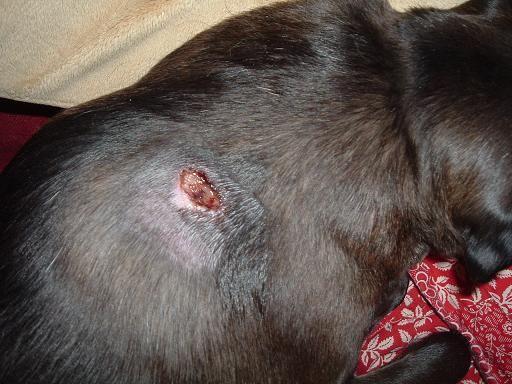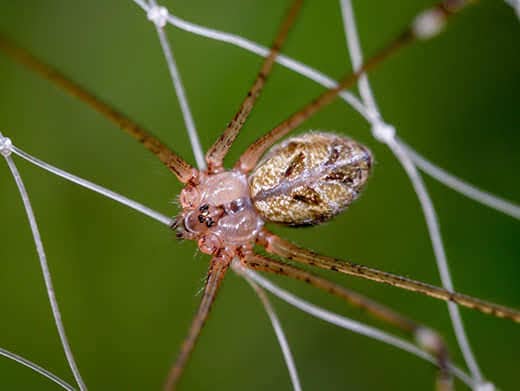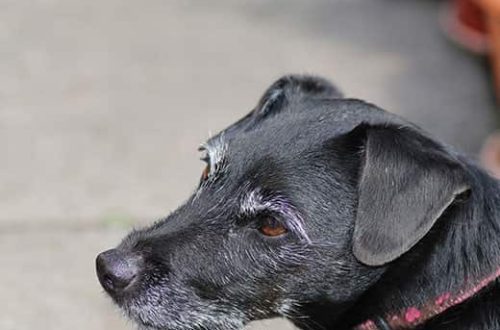
The dog was bitten by a spider: what to do and how to help the pet
Bo everythingthe worldmore 45 000 ofspiders, including the brown recluse spider. If so, dog owners’ concerns about one of these spiders biting their beloved four-legged friend are understandable.
Most spider bites cause only localized redness and swelling in dogs and do not require veterinary attention. However, there are several spiders that are dangerous for dogs and can be a health hazard. Hill’s experts tell you how to recognize them and what to do.
Contents
What spiders are dangerous
There are 11 types of spiders in total. Any dog owner should be aware of the two main ones:

- Brown recluse spider. The most common poisonous insect that can bite a dog is loxosceles reclusa, brown recluse spider. This is a spider, on the back of which a pattern resembling a violin is visible. It is mainly active at night. Pets are usually bitten by recluse spiders that hide in their beds, but they can also hide in pantries, attics, and dry basements. These spiders are predominantly found in the Midwest, but can occasionally be found in other parts of the United States.
- Black Widow. These spiders are recognizable by their shiny black bodies and red or orange hourglass markings on their abdomens. Young spiders are brown, with red or orange stripes that gradually change into an hourglass mark as they mature. The black widow is found in all US states except Alaska. These spiders like to nest near buildings and structures. In this species, only the females are venomous.
What does a spider bite look like?
Spider bites can vary depending on the type of spider. For example, brown recluse spiders secrete a venom that causes a local skin reaction in humans. There is no consensus on what these bites look like in pets, but symptoms that a dog has been bitten by a spider include:
- pain around the bite in the first minutes, followed by itching and soreness;
- the development of a classic target lesion, representing an area of skin that loses blood supply, darkens and is surrounded by redness;
- fever, chills, rash, nausea, or joint pain;
- the occurrence of a deep non-healing ulcer a few weeks after the bite (the degree of damage depends on how much poison was injected into the bite site);
- possible anemia and kidney problems.
As for black widow venom, it contains a compound called alpha-latrotoxin. It is a strong neurotoxin. But according to the sixth edition of the book “5 Minute Veterinary Consultation” 15% of black widow bites contain no venom and cause no symptoms other than a slight redness at the bite area. If the poisoning is mild, symptoms may not appear for several weeks. In the case of a severely envenomed dog after a black widow bite, clinical signs may include:

- tremor and spasms;
- pain;
- hard stomach;
- anxiety;
- speeded up heartbeat;
- excessive salivation;
- swelling of the muzzle when bitten into it.
What to do if a dog is bitten by a spider
If you suspect that your dog has been bitten by a spider, contact your veterinarian immediately. If the pet already shows clinical signs, you need to call the clinic and inform about the arrival. Specialists can redirect the pet to the local emergency hospital. If possible, you should carefully place the spider in a jar and take it with you.
If a bite wound is noticeable, gently apply an ice pack to it. It is important to remember that when a dog is scared or in pain, he may bite. Tips Fear Free Happy Homes about how to deal with an animal that is frightened or in pain will help establish contact with the pet. It is important for the owner to remain calm and remember to breathe.
If your veterinarian recommends, you can give your dog an oral antihistamine before leaving home. The dosage should be recommended by a specialist.
What will the doctor do if the dog is bitten by a spider
The vet will check the dog’s vital signs and perform a complete physical exam. You need to give him as much information as possible and show the spider if you can bring it with you. Depending on the type of insect, laboratory tests and hospitalization may be recommended.
If a brown recluse spider bite is suspected, the veterinarian will not be able to provide any emergency assistance. The bites of these spiders usually take a long time to heal – six to eight months. Most of the care is done at home, so it’s important to keep the wound clean and maintain regular contact with the veterinarian, even if it’s just weekly phone calls.
If a deep ulcer has formed, the specialist will likely prescribe antibiotics to prevent a secondary bacterial infection. If the pet is in pain, he will be prescribed pain medication.
If the affected area grows in size with a dead zone in the middle, the veterinarian will most likely recommend surgical removal of the dead tissue. In this case, skin grafting may be required to speed up the healing process. If a four-legged friend is very ill, he will be shown hospitalization for intravenous infusion therapy. In rare cases, a blood transfusion will be required. A brown recluse bite usually leaves a scar after it has healed.
If a black widow bite is suspected or confirmed, it is recommended to use antivenom. The veterinarian may hospitalize the dog to administer antivenom and fluid through an intravenous catheter, monitor for any allergic reactions to medications, and treat any muscle spasms.
Bites from spiders and otherswidespreadinsects can be prevented by regularly taking pest control measures in and around the home. In the habitats of these spiders, you should not let the dog near the woodpile and wooden piles.
See also:
- How to protect your dog from tick bites
- Tick Removal and Prevention of Tick Infestation in Dogs
- First aid
- Helping your dog recover from injury or surgery





